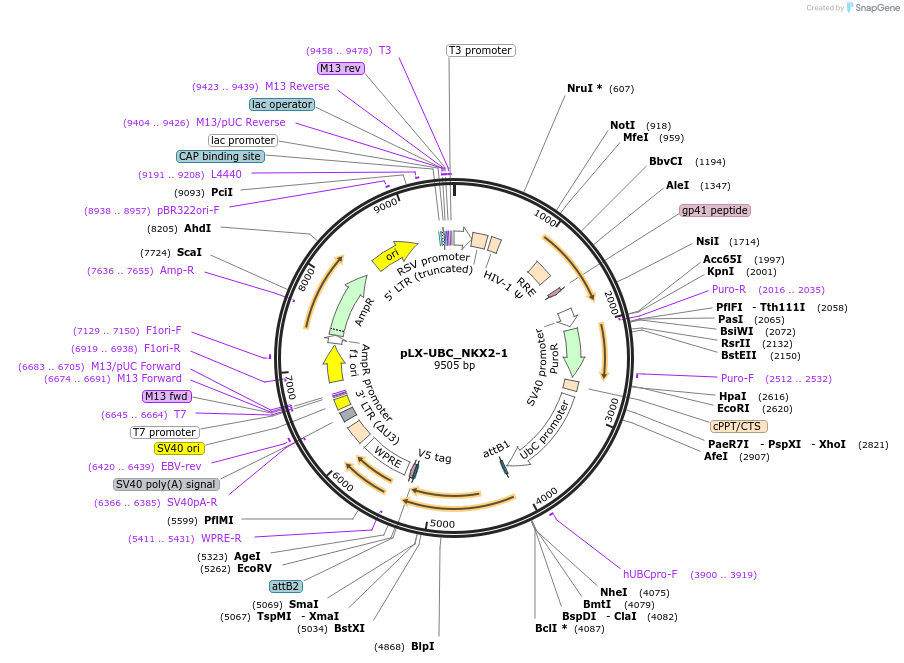pLX-UBC_NKX2-1
(Plasmid
#221495)
-
PurposeNKX2-1 short isoform lentiviral overexpression using UBC promoter
-
Depositing Lab
-
Sequence Information
Ordering
| Item | Catalog # | Description | Quantity | Price (USD) | |
|---|---|---|---|---|---|
| Plasmid | 221495 | Standard format: Plasmid sent in bacteria as agar stab | 1 | $85 | |
Backbone
-
Vector backbonepLX307
- Backbone size w/o insert (bp) 10065
-
Vector typeMammalian Expression, Lentiviral
-
Selectable markersPuromycin
Growth in Bacteria
-
Bacterial Resistance(s)Ampicillin, 100 μg/mL
-
Growth Temperature37°C
-
Growth Strain(s)NEB Stable
-
Copy numberHigh Copy
Gene/Insert
-
Gene/Insert nameNKX2-1
-
SpeciesH. sapiens (human)
-
Insert Size (bp)1113
-
Entrez GeneNKX2-1 (a.k.a. BCH, BHC, NK-2, NKX2.1, NKX2A, NMTC1, T/EBP, TEBP, TITF1, TTF-1, TTF1)
- Promoter UBC
-
Tag
/ Fusion Protein
- V5 (C terminal on insert)
Cloning Information
- Cloning method Restriction Enzyme
- 5′ cloning site XhoI (not destroyed)
- 3′ cloning site BmtI-HF (not destroyed)
- 3′ sequencing primer WPRE-Rv (Common Sequencing Primers)
Resource Information
-
Supplemental Documents
-
Article Citing this Plasmid
Terms and Licenses
-
Academic/Nonprofit Terms
-
Industry Terms
- Not Available to Industry
Trademarks:
- Zeocin® is an InvivoGen trademark.
Depositor Comments
UBC promoter was obtained from Luc.Cre empty vector (Addgene #20905) and cloned to replace EF1a promoter in pLX307 vector using PCR and restriction enzyme digestion/ligation.
These plasmids were created by your colleagues. Please acknowledge the Principal Investigator, cite the article in which the plasmids were described, and include Addgene in the Materials and Methods of your future publications.
-
For your Materials & Methods section:
pLX-UBC_NKX2-1 was a gift from Matthew Meyerson (Addgene plasmid # 221495 ; http://n2t.net/addgene:221495 ; RRID:Addgene_221495) -
For your References section:
Dosage amplification dictates oncogenic regulation by the NKX2-1 lineage factor in lung adenocarcinoma. Pulice JL, Meyerson M. bioRxiv [Preprint]. 2023 Oct 27:2023.10.26.563996. doi: 10.1101/2023.10.26.563996. 10.1101/2023.10.26.563996 PubMed 37994369

